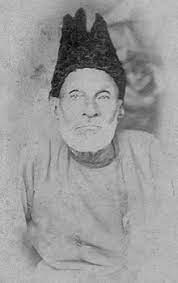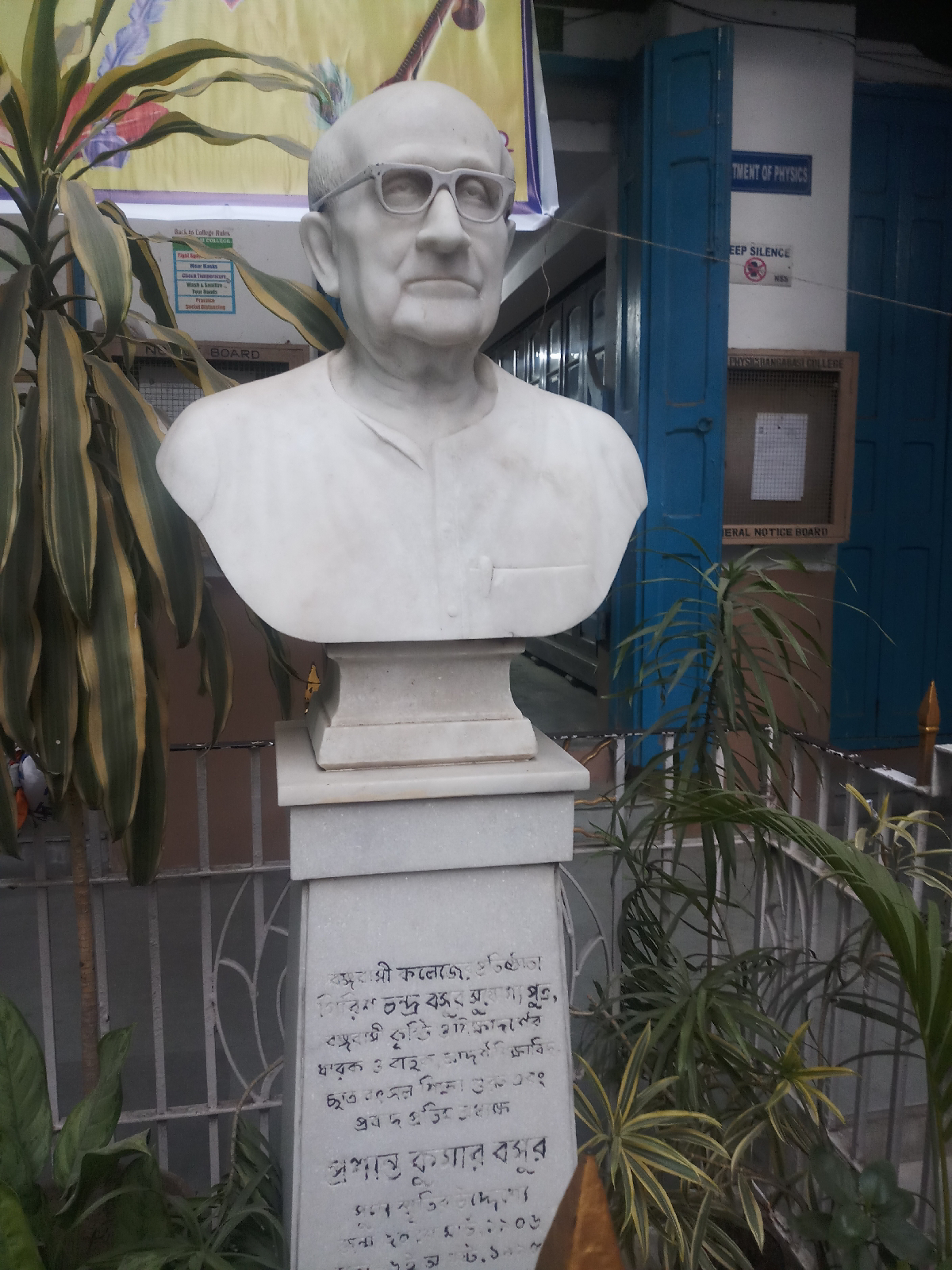- Maharaja Nabakrishna
Deb (1737–1797) founded the Shobhabazar Rajbari. He started life as a modest
aristocrat but soon attained wealth by his service to the British, firstly as clerk-cum-interpreter to Governor Drake and then as a friend and advisor to the East India Company and in
particular by his role in assisting to defeat Siraj ud-Daulah at Plassey.
 |
| Bust statue of Raja Nabakrishna Deb |
 |
| File picture of Raja Nabakrishna Deb |
- During his
lifetime Raja Nabakrishna Deb built two houses. The building at 35 Raja
Nabakrishna Street (known as Shobhabazar Rajbari or "Baag ola Bari - House
with the lions"), on the northern side of the road, was the one first
constructed by him, subsequently inherited by his adopted son from his elder
brother Gopimohan and his descendants including his son Radhakanta Deb.
 |
| Remnants of the Baagh ola Bari and the building from where the British onlooked the celebrations |
 |
| Mirror in honor of Lord Clive |
 |
| The Natghar today |
- The
house at 33 Raja Nabakrishna Street (known as Choto Rajbari) was built by him
when a son was born to him later in life, and was left to his biological son
Rajkrishna and his descendants.
 |
| Choto torof house |
- Presently, the tenth
Generation of Maharaja Naba Krishna Deb is residing there. Now, Durga Pujo is
celebrated separately at both the houses.
- Raja Nabakrishna Deb celebrated Durga
Puja in 1757 on a grand scale after the British defeated Siraj-ud-Daulah at the
battle of Plassey. Lord Clive and Warren Hastings were in the list of invitees. Cultural programs were arranged to entertain the guests.This set the trend of inviting outsiders to witness bonedi barir pujo. This also set the spirit of competion among the various merchant class members and later various pujo organisers which prevails till date.
- The pomp and grandeur led to the its naming as 'Company Pujo'. Gradually there was a deviation from the ritualistic Hindu worship to oppulence marked by elaborate menu of meat and drinks.
- Originally a saat-mahala house the most intact of the
remaining spaces is the courtyard with the thakurdalan. The large
central courtyard with thakurdalan bears multi-foliate arches supported
on pairs of squared pilasters. The
double storey wings on either side of the courtyard connect the thakurdalan with the naach ghar to the south. The roof of the naach ghar has fallen through and very little of the
superstructure remains. A set of eight massive Tuscan columns support a
wide projecting cornice at roof level. Two rows of multifoliate arches at the
northern end provide access to the nabaratna temple at the rear.
- The British could see the pujo from a building opposite the thakurdalan. A side door was for the entry of the womenfolk.
- Sovabazar Durga
Puja considers Durga as Baishnabi Maa. This is as per Puranas where in a
section called Brihadnandakishore, Devi Durga is considered as Baishnabi Maa.
- Sovabazar Rajbari worships ek chala idol with the lion idol as Ghotokmuki Singha, a lion’s body with a horse’s face.” They lay before their idol 57 types of mithai bhog or sweet dishes.
- A popular feature of earliest pujo were the nautch girls. An exquisite feature was that these dancing girls could draw images by their toes on the floor laden with flower petals and coloured powders. This was later depicted in a painting by William Princep. Miss Wrangham, as mentioned in Hicky's Bengal Gazette, was one of the phenomenal performers.
- The space where the Durga idol is placed is flanked by two mirrors bearing ornate woodwork engraved with the portrait of Lord Clive and his wife.
 |
| Painting by William Prinsep |
- Their daily deity who is worshipped is Radha Gobindo and Gopinath Jiu. It was installed in the house of Raja Nabakrishna Deb about 260 years ago and is currently worshipped at the first floor.
From the page of Rajiv Soni the following interesting read was obtained : In 1762, five years after the "battle" at Plassey, Raja Nabakrishna Deb organised a Devsabha which is a gathering of dieties.The Devsabha was held by inviting dieties from five locations: Radhaballav of Ballavpur, Shyamsundar of Khardah, Madan Mohan of Bishnupur ,Nandadulal of Saibana and Gopinath Jeu of Agradweep.The Devsabha was a success and the idols were retuned to the temples after the event but for the one from Agradweep. Raja Nabakrishna declared that this deity had appeared in his dream and had wished to stay permanently at Sova Bazar.Gopinath refused and did not even consider the offer of the waiver of Rs 300,000 owed by to him to the Raja. The dispute lingered and finally went to the Privy Council in London where the Raja lost in court but he was not done yet. He asked a master craftsman to make an identical idol and when the head priest arrived from Agradweep to take the idol back he was shown two and asked to select.An idol was selected by the priest and taken back.Was it the real one? No one knows.The Family tell that the Diety appeared in the dream of the Raja again and said if even he was confused by the two idols he should look for a fly on the neck of the idol which would be the real one.In any case the wily Raja would have seen to that he was in possession of the genuine idol.
- In this building, the first civic reception of Swami Vivekananda after his return from Chicago Parliament of Religions was organized in 1897 by Raja Binoy Deb Bahadur.



























Comments
Post a Comment